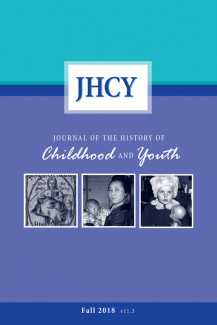
Johns Hopkins UniversityEst. 1876
America’s First Research University
A Night at the Museum

Loren Lerner, Ph.D., is Professor of Art History at Concordia University. In 2005, she was curator of “Picturing Her: Images of Girlhood / Salut les filles! La jeune fille en images” at the McCord Museum. This exhibition project led to her editorship of Depicting Canada's Children in 2009.
Lerner's sustained interest in images of young people is the subject of articles in a wide spectrum of publications, spanning the late 18th century into the present time, including Rethinking Professionalism: Essays on Women and Art in Canada, 1850-1970, Canadian Children’s Literature, Journal of Canadian Art History, Journal of the History of Childhood and Youth, Girlhood Studies, Historical Studies in Education, Papers of the Bibliographical Society of Canada, Healing the World’s Children and Girlhood and the Politics of Place.
A pedagogical commitment to student web publishing has guided Lerner’s teaching and the development of websites such as Picturing Children and Youth: A Canadian Perspective and Family Works at the Montreal Museum of Fine Arts.
She suggested a special issue of the Journal of the History of Childhood and Youth on the ways in which museums have examined the lives of children, and the ways in which children have engaged museums to journal editor James Maarten in 2017. The issue came out last year, and she joined us for a short Q&A about the issue.

How important was the strong international context of the essays?
The international context was very important. As editor of Family Works, a website produced with my students at Concordia University in partnership with the Montreal Museum of Fine Arts in 2016, I became even more aware of the cultural history of childhood and youth within a global context. For this website, my students explored 82 artworks in the permanent collection of the Montreal Museum of Fine Arts that portray children, childhood and family in different historical and cultural contexts. In the analyses of these works, we examined the gendered education of youth in modern Europe, female adolescent sexuality and identity, the autonomy of children, the Romantic ideal of childhood innocence and the Holy Family in Christianity.
We also considered, through comparative analyses of different artworks, subjects such as the evolution of children’s clothing in early modern and modern Europe; poor and destitute children in late-nineteenth-century Europe; the commemoration of deceased children through miniature portraiture; and the perception of Roman Catholic children in twentieth-century Quebec as the tangible presence of the divine.
What did you learn in putting this issue together?
I realized that the first two decades of the 21st century have seen numerous exhibitions devoted to the material culture of young people and childhood. Besides art and design museums, many other kinds of museums dedicated to conserving and explaining the material expressions of human activity have held such exhibitions. All kinds of youth-related topics and issues, including child imagery, the ideologies of childhood, race, social class, gender, children’s bodies, health, sexuality, fashion and the commercialization of youth have been examined. Within this context works of art, children’s drawings, architectural renderings, photographic snapshots, commercial reproductions, cartoons, advertisements, toys, games, clothing and furniture were given equal weight and treatment. Many art historians, along with social historians and specialists in cultural studies, critical theory, media studies, education, ethnology, anthropology and archaeology contributed to these exhibitions with approaches that encourage methodological diversity and differing viewpoints.
How do you hope this will advance the study of children in museum settings?
Given the strength and scope of recent research reflected in this special issue, my hope is that more studies on children in museum settings will be pursued that focus on: the origins, ideologies, changing philosophies and current practices of children's museums; the frameworks and perspectives of collections of childhood objects in national museums; the presentation of children and youth in exhibitions across diverse cultures and socioeconomic backgrounds; the evolution of artifacts in museums that reflect childhood and childrearing; and the practices and policies of exhibitions about or for children.


